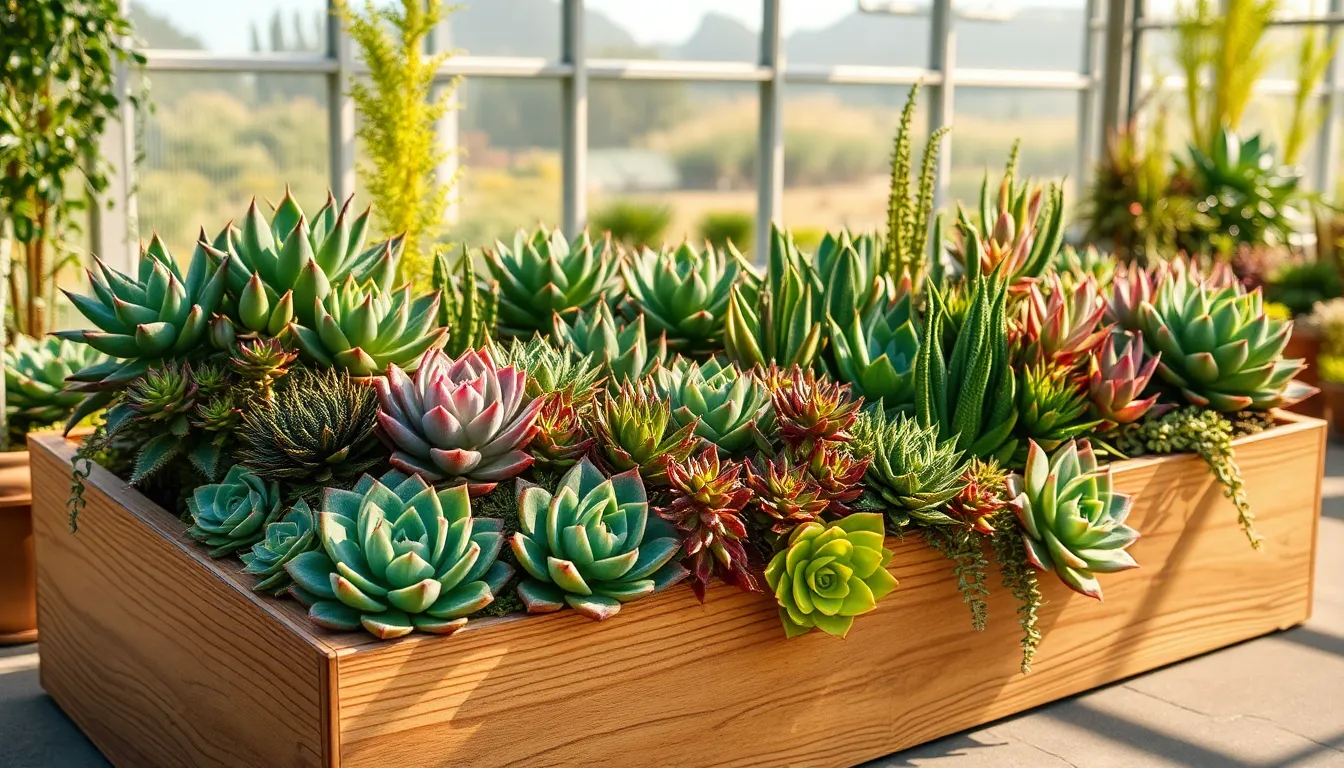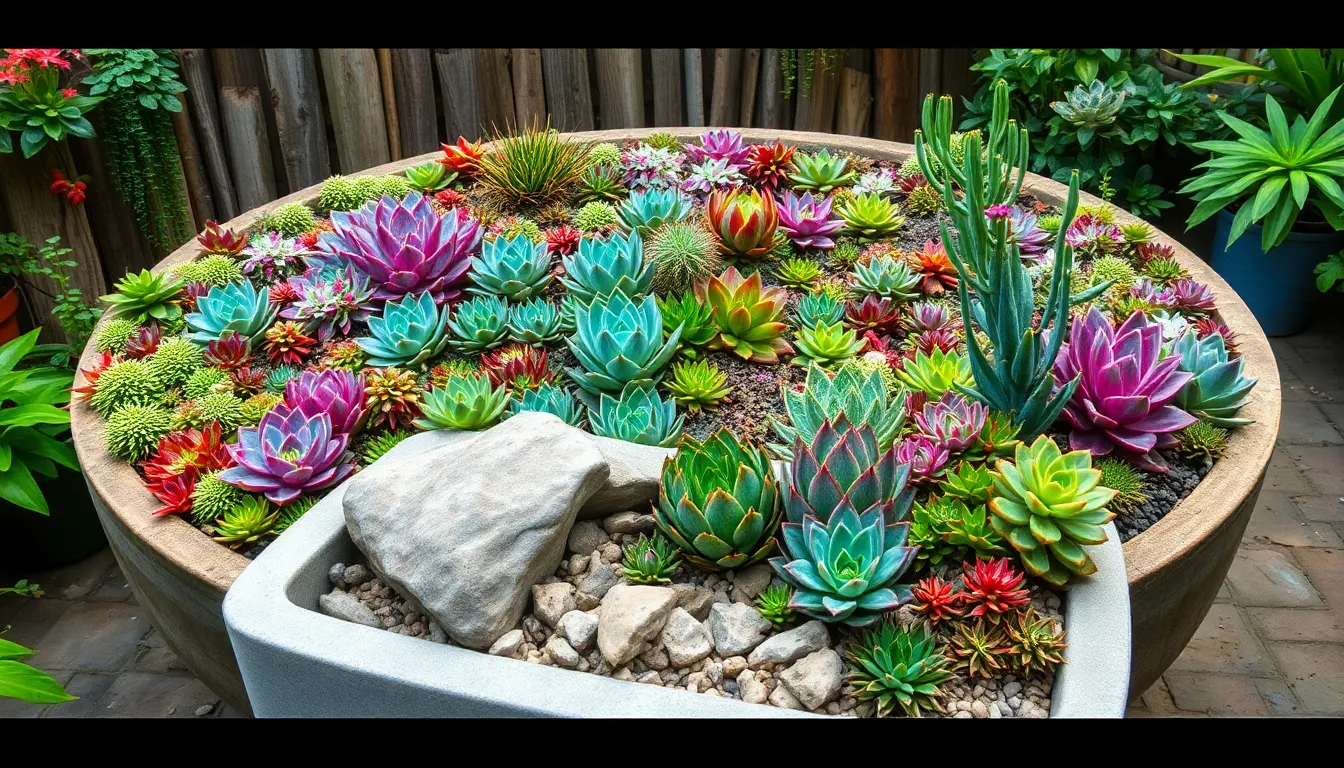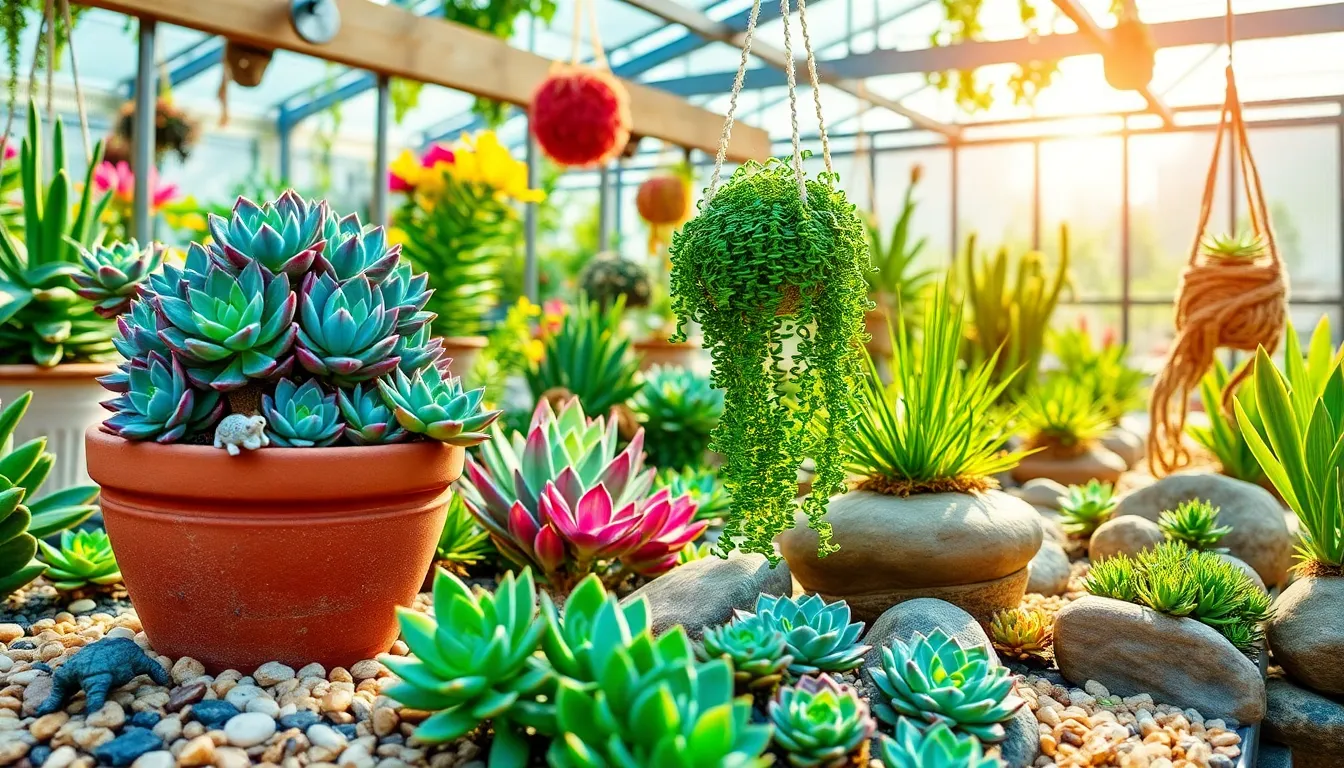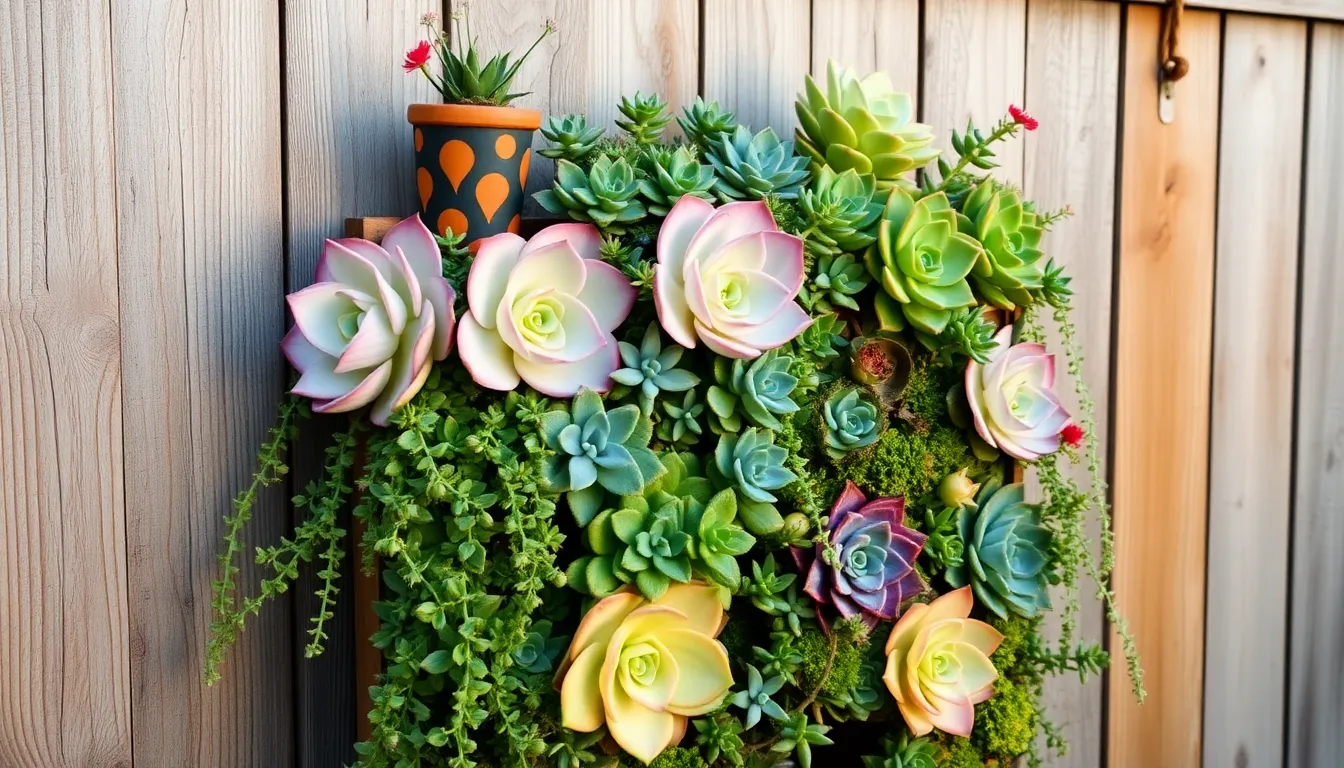Welcome to the vibrant world of organic succulent garden designs, where the beauty of nature meets the art of sustainable gardening. Whether you’re a seasoned gardener with a flourishing green thumb or a curious beginner eager to dip your toes into the soil, succulents offer a delightful way to express creativity while being kind to the environment.
Succulents are more than just trendy houseplants; they are a testament to resilience and adaptability, thriving in conditions where many other plants might struggle. By exploring these 14 organic succulent garden designs, you’ll discover how to create stunning displays that not only enhance your living spaces but also promote eco-friendly practices.
In this article, you’ll learn to harness the unique textures and colors of succulents to craft gardens that are as functional as they are beautiful. From vertical wall gardens to charming tabletop arrangements, each design is crafted with sustainability in mind, making it perfect for those looking to reduce their ecological footprint.
As you delve into these designs, you’ll find inspiration that caters to both small urban spaces and expansive landscapes. With practical tips and insightful guidance, you’ll be equipped to create a succulent garden that reflects your personal style while supporting biodiversity.
Introduction to Organic Succulent Gardens
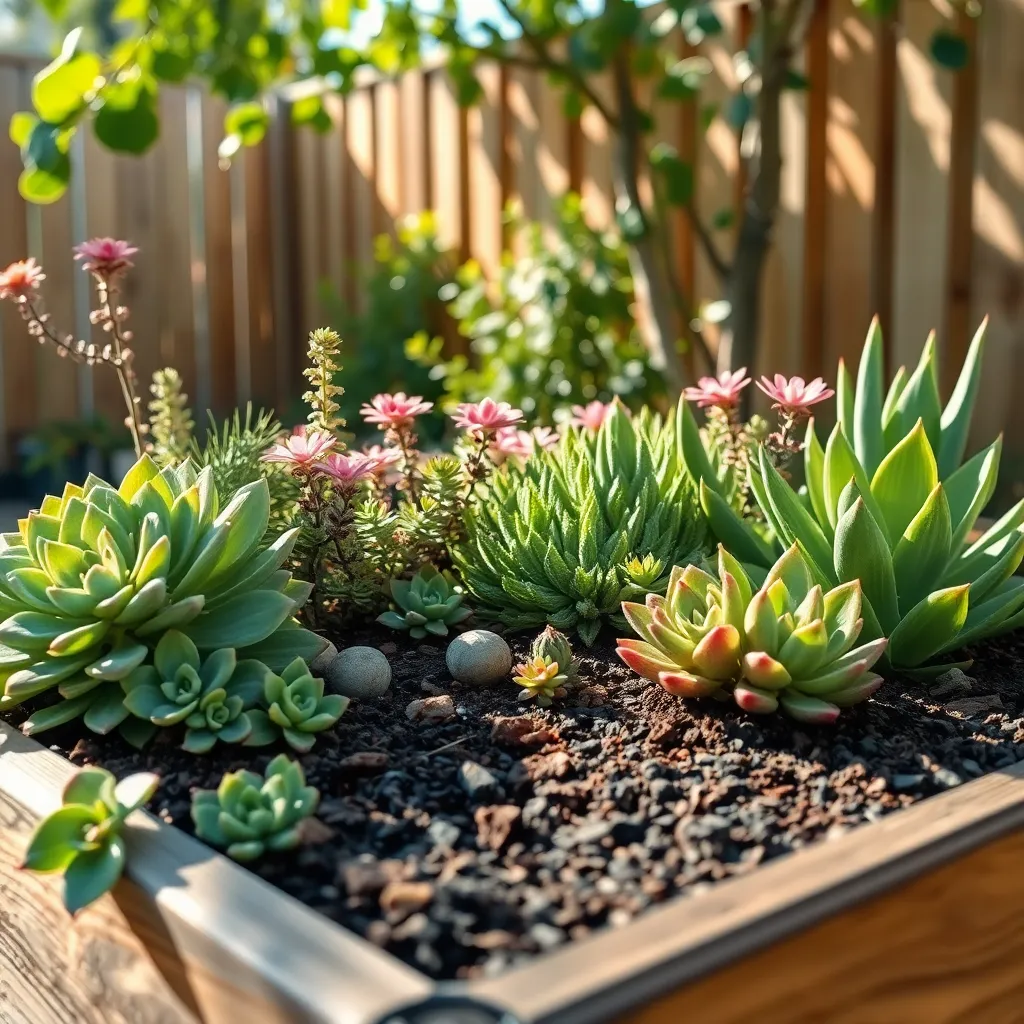
Creating an organic succulent garden is a rewarding endeavor that blends sustainability with aesthetic appeal. Start by selecting succulents that are well-suited to your climate, as this will ensure they thrive with minimal intervention.
When preparing the soil, aim for a mix that offers excellent drainage and aeration, such as a blend of coarse sand, perlite, and organic compost. This combination will provide the necessary nutrients while preventing root rot, a common issue with succulents.
Watering is a critical aspect of succulent care; these plants generally require less water than typical houseplants. Water deeply but infrequently, allowing the soil to dry out completely between waterings to mimic their natural arid habitats.
For more experienced gardeners, consider experimenting with companion planting in your organic succulent garden. Pairing succulents with herbs like thyme or rosemary not only enhances biodiversity but also helps deter pests naturally.
Choosing Sustainable Succulent Varieties
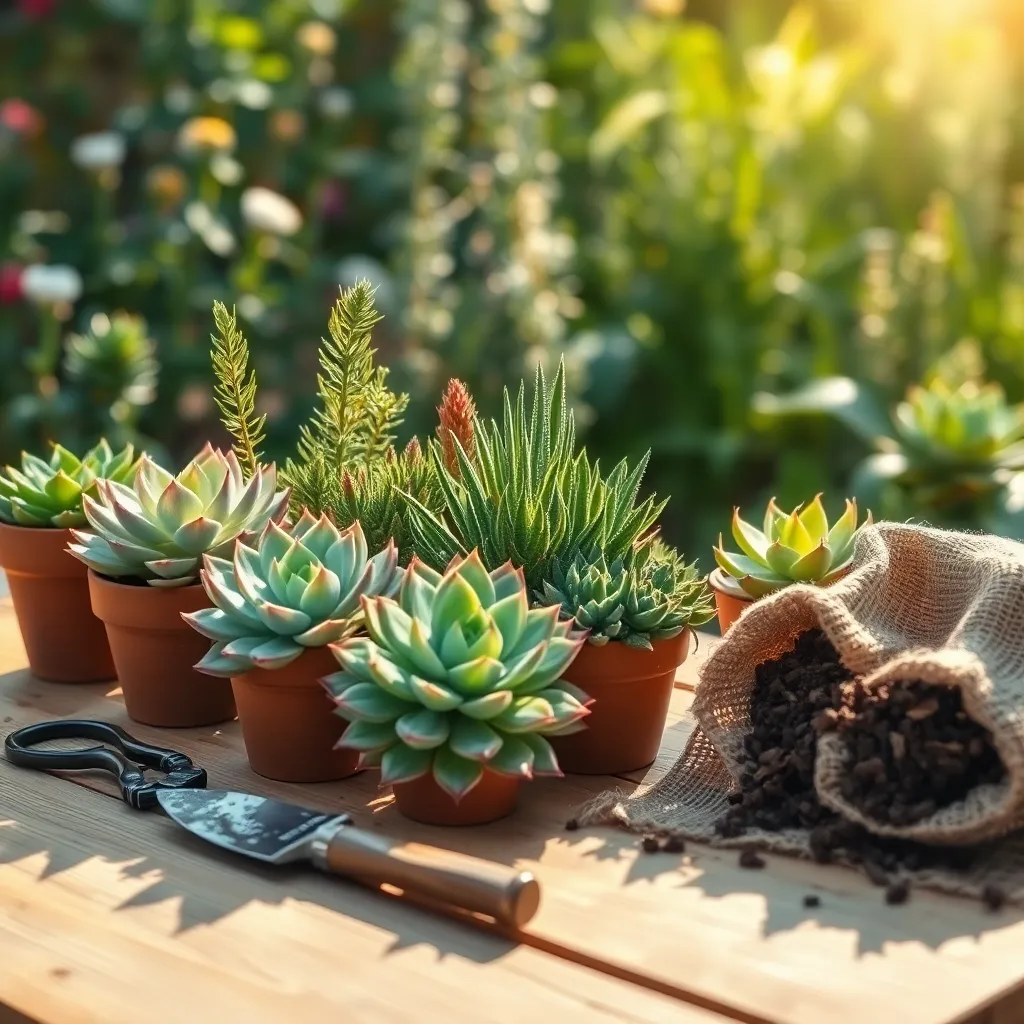
Choosing sustainable succulent varieties is a wonderful way to create an environmentally friendly garden. These plants are not only low-maintenance but also adaptable to various climates, making them a top choice for eco-conscious gardeners.
Start by selecting succulents that thrive in your local climate to reduce the need for extra resources. Opt for native species whenever possible, as they are already adapted to your region’s specific conditions and require less intervention.
Consider using succulents like Agave and Aloe, which are known for their drought tolerance and striking appearance. These plants need well-draining soil, such as a sandy mix, and should be watered sparingly, allowing the soil to dry out completely between waterings.
For those with a bit more experience, try creating a mixed succulent garden with species that vary in color and texture. Combine Echeveria, Sedum, and Crassula for a vibrant display, and remember that these varieties prefer bright, indirect sunlight and occasional feeding with a balanced, organic fertilizer during the growing season.
Eco-Friendly Garden Layout Ideas
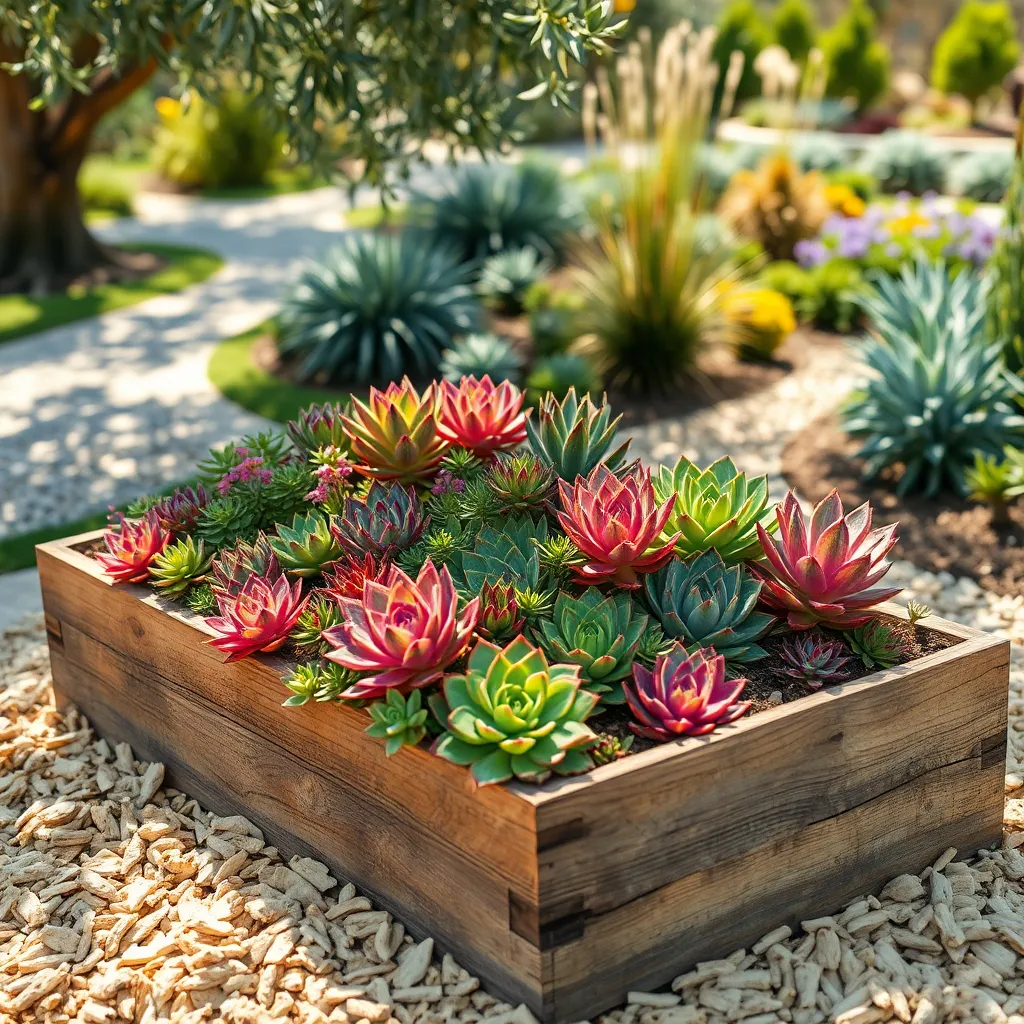
Incorporating eco-friendly garden layout ideas into your succulent garden enhances both its beauty and sustainability. Begin by planning your garden to maximize sunlight exposure, ensuring your succulents receive at least six hours of bright, indirect light daily.
Consider using raised beds or containers made from recycled materials to reduce your environmental footprint. These structures can improve drainage and allow for better control of soil quality, which is crucial for succulent health.
Another idea is to implement a rainwater harvesting system to conserve water and keep your succulents well-hydrated without relying on municipal sources. Succulents generally require less water, but a drip irrigation system can provide precise moisture levels during dry periods.
Creating a companion planting scheme with succulents can attract beneficial insects, reducing the need for chemical pesticides. Choose plants like lavender or yarrow, which can coexist with succulents and support a healthy garden ecosystem.
Incorporating Natural Elements
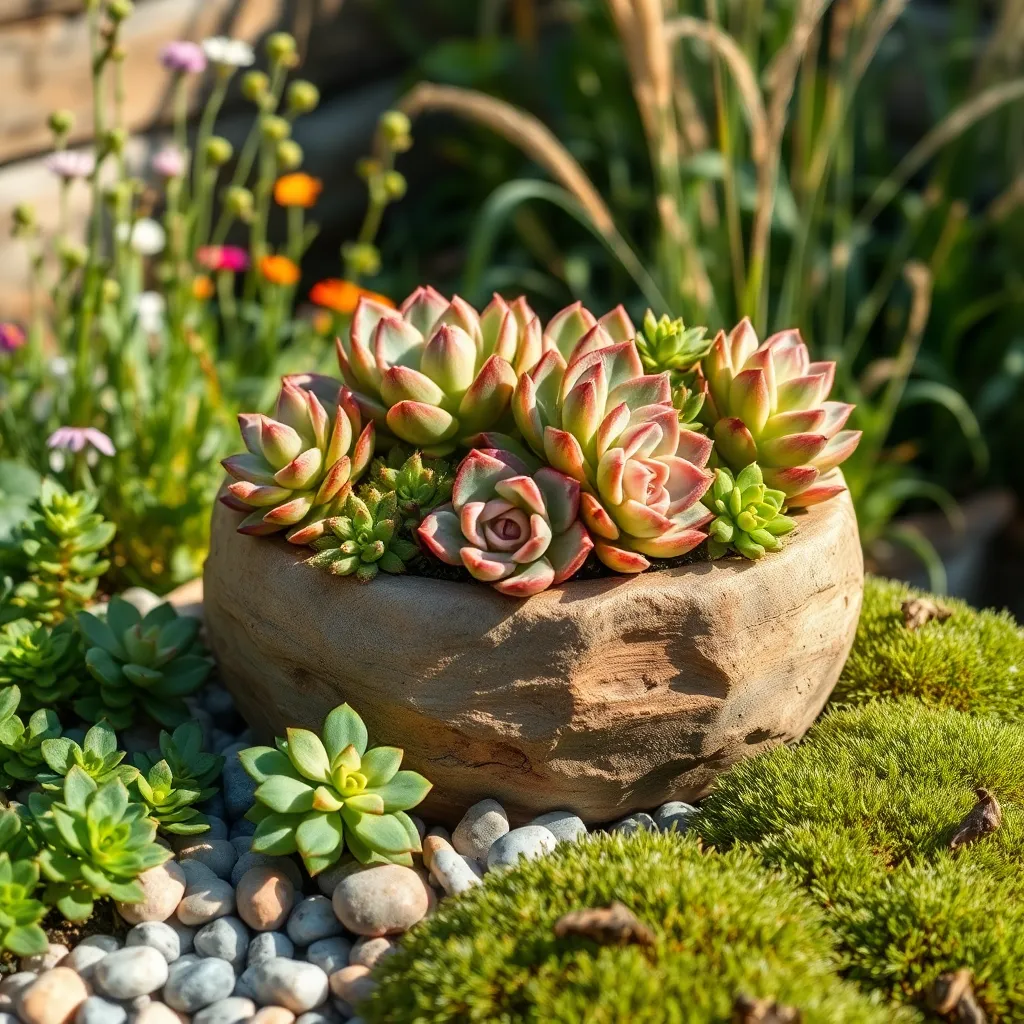
Incorporating natural elements into your succulent garden can create a harmonious and balanced environment. Start by selecting stones and rocks that complement the colors and textures of your succulents, providing both aesthetic appeal and functional drainage benefits.
Position larger rocks strategically to create focal points and borders within the garden. These natural barriers not only define spaces but also help retain moisture, a crucial aspect for succulents that thrive on well-drained soil.
Consider using driftwood or branches to add vertical interest and texture to your succulent arrangements. These organic materials can serve as natural trellises for climbing succulents or as decorative accents that mimic nature’s own beauty.
Introduce a water feature, such as a small fountain or birdbath, to attract beneficial insects and provide a serene auditory backdrop. The gentle sound of water can enhance the tranquility of your garden, while also subtly increasing humidity levels, which some succulents may appreciate depending on your climate.
Designing with Drought-Tolerant Plants
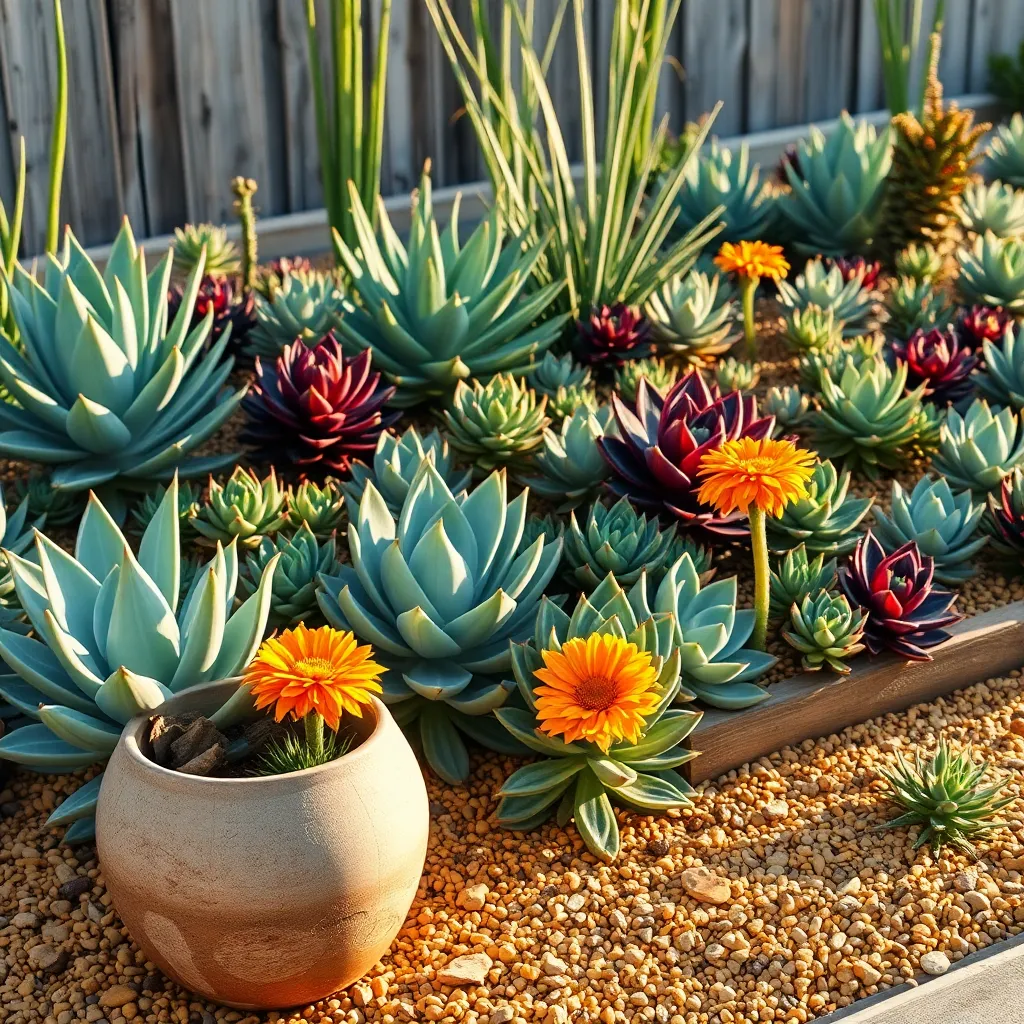
Designing with drought-tolerant plants can transform your garden into a resilient and sustainable oasis. These plants require less water and maintenance, making them perfect for gardeners looking to reduce their environmental impact.
Start by selecting succulents such as Agave, Sedum, and Echeveria, which are known for their ability to thrive in dry conditions. These varieties can store water in their leaves, allowing them to survive extended periods without rainfall.
When planting, use a well-draining soil mix that combines sand, perlite, and organic matter to prevent root rot. This type of soil ensures excess water quickly drains away, mimicking the natural arid environments these plants prefer.
Water your drought-tolerant succulent garden deeply but infrequently; once every two to three weeks is usually sufficient. Always check the soil moisture before watering to avoid over-saturating the roots.
Incorporate a layer of mulch around your plants to help retain soil moisture and suppress weeds. Organic mulch, such as small gravel or stones, can also enhance the aesthetic appeal of your garden while providing functional benefits.
For advanced gardeners, consider integrating a drip irrigation system to deliver water directly to the roots, minimizing evaporation. This system can be set on a timer to ensure consistent watering, further reducing your garden’s water usage.
Utilizing Recycled Materials Creatively
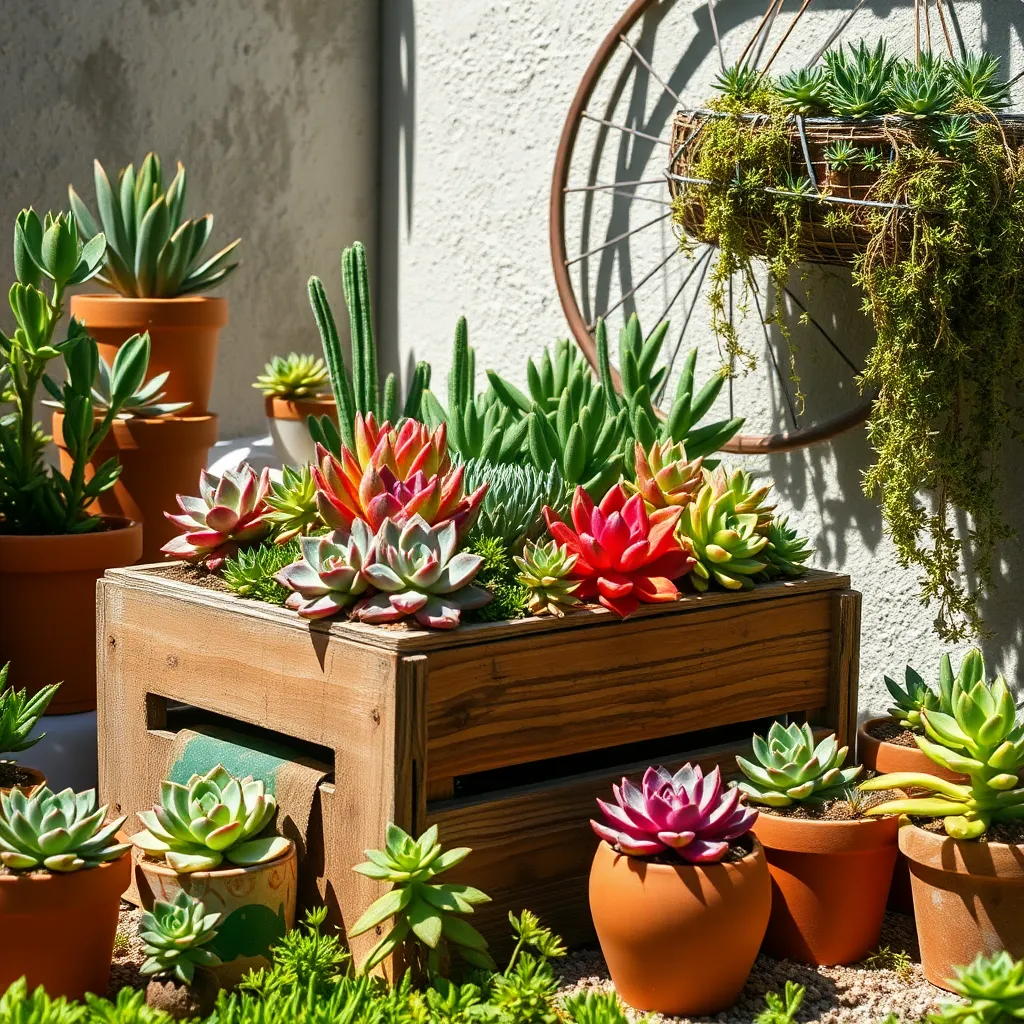
Recycled materials can add a unique touch to your succulent garden while promoting sustainability. Consider using old wooden pallets to create vertical planters; simply fill the gaps with soil and plant your succulents in rows for a striking display.
Incorporating broken pottery pieces is another creative way to design your garden. These can be used as decorative elements or functional containers; just ensure they have adequate drainage by drilling additional holes if necessary.
Utilizing tin cans is not only eco-friendly but also adds a rustic charm to your garden. Make sure to punch small holes in the bottom for drainage and line the cans with a thin layer of gravel before adding your succulent soil mix.
For those with a knack for creativity, old tires can serve as bold planters. Stack them to create height in your garden, and paint them with colors that complement your overall design for an eye-catching effect.
Companion Planting for Succulents
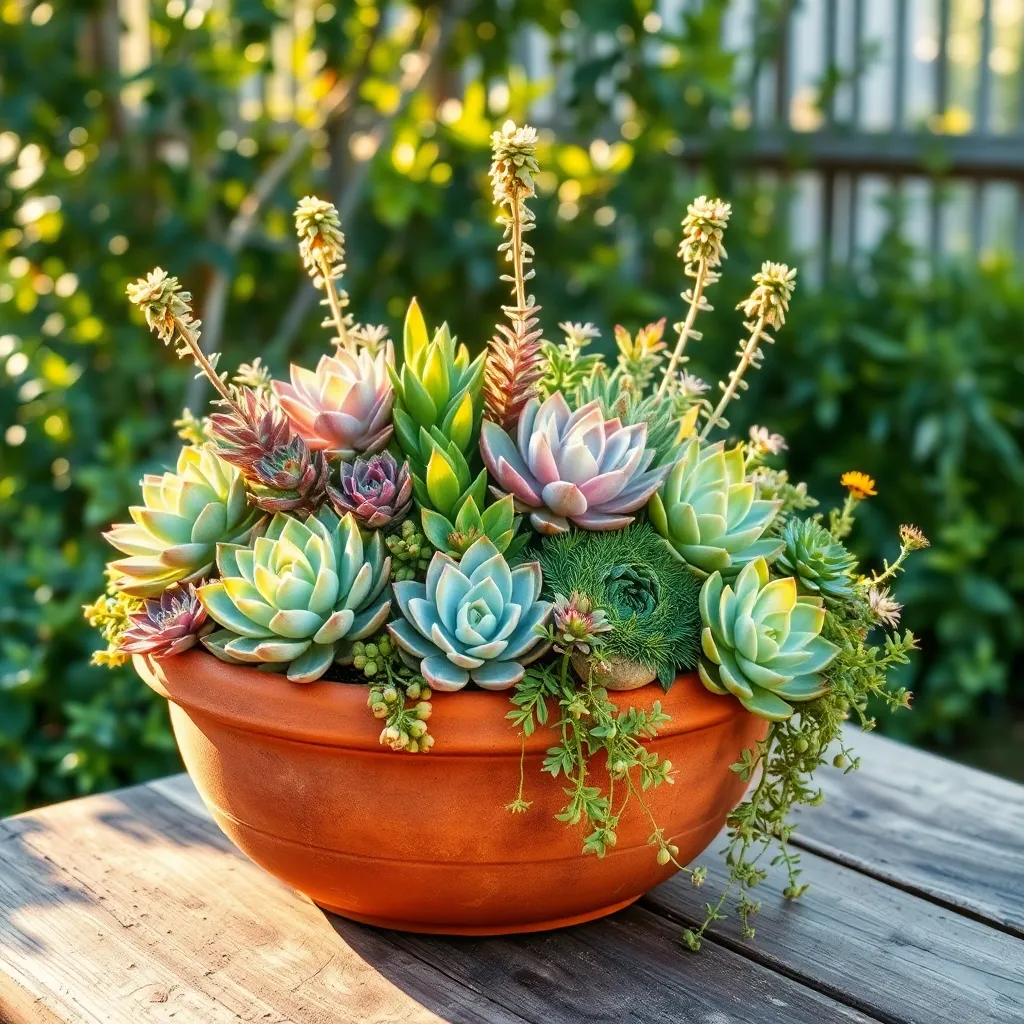
Companion planting for succulents is a clever way to enhance growth and beauty in your garden. By pairing succulents with compatible plants, you can create a balanced ecosystem that requires minimal maintenance.
Consider planting succulents with herbs like thyme or oregano, as they thrive in similar conditions. Both succulents and these herbs prefer well-drained soil, making a gritty mix of sand, perlite, and potting soil ideal for your garden bed.
Additionally, succulents can be paired with ornamental grasses such as blue fescue or carex. These grasses provide contrasting textures and thrive in full sun, just like most succulents, making them perfect companions.
For a more advanced approach, introduce nitrogen-fixing plants like clover to your succulent garden. They enrich the soil naturally, reducing the need for synthetic fertilizers and promoting healthier succulent growth.
Organic Soil Preparation Techniques
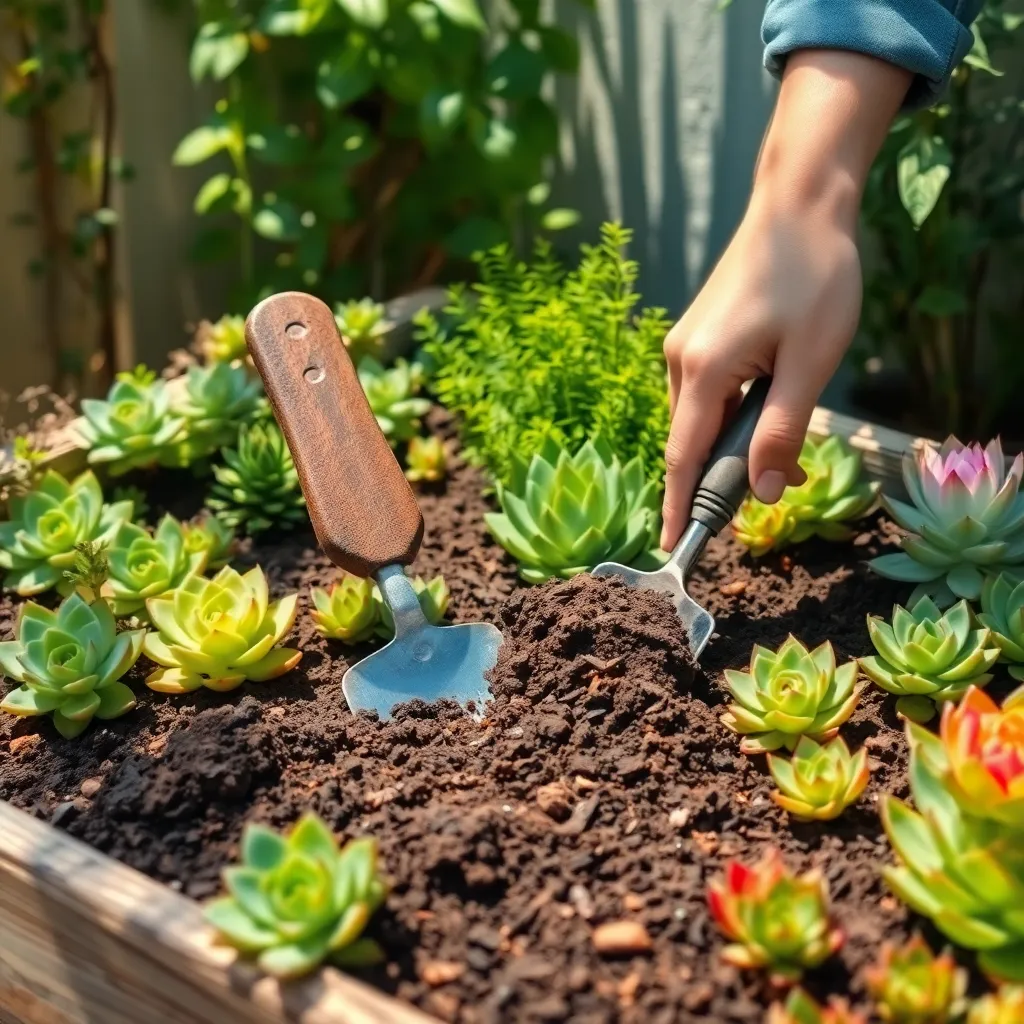
To prepare soil organically for succulents, start by choosing a well-draining mix that replicates their natural habitat. A mixture of coarse sand, perlite, and organic compost works wonders, providing the necessary drainage while retaining essential nutrients.
Incorporating organic matter is key to boosting soil fertility without synthetic additives. Use materials like coconut coir or decomposed granite to enhance the soil structure and promote healthy root development.
For added benefits, consider enriching your soil with natural amendments like crushed eggshells or bone meal. These supplements deliver a slow release of calcium and phosphorus, crucial for succulent growth and resilience.
As a tip for more experienced gardeners, try introducing mycorrhizal fungi to your soil. This symbiotic relationship enhances nutrient uptake, making your succulents more robust and less susceptible to stress.
Natural Pest Management Solutions
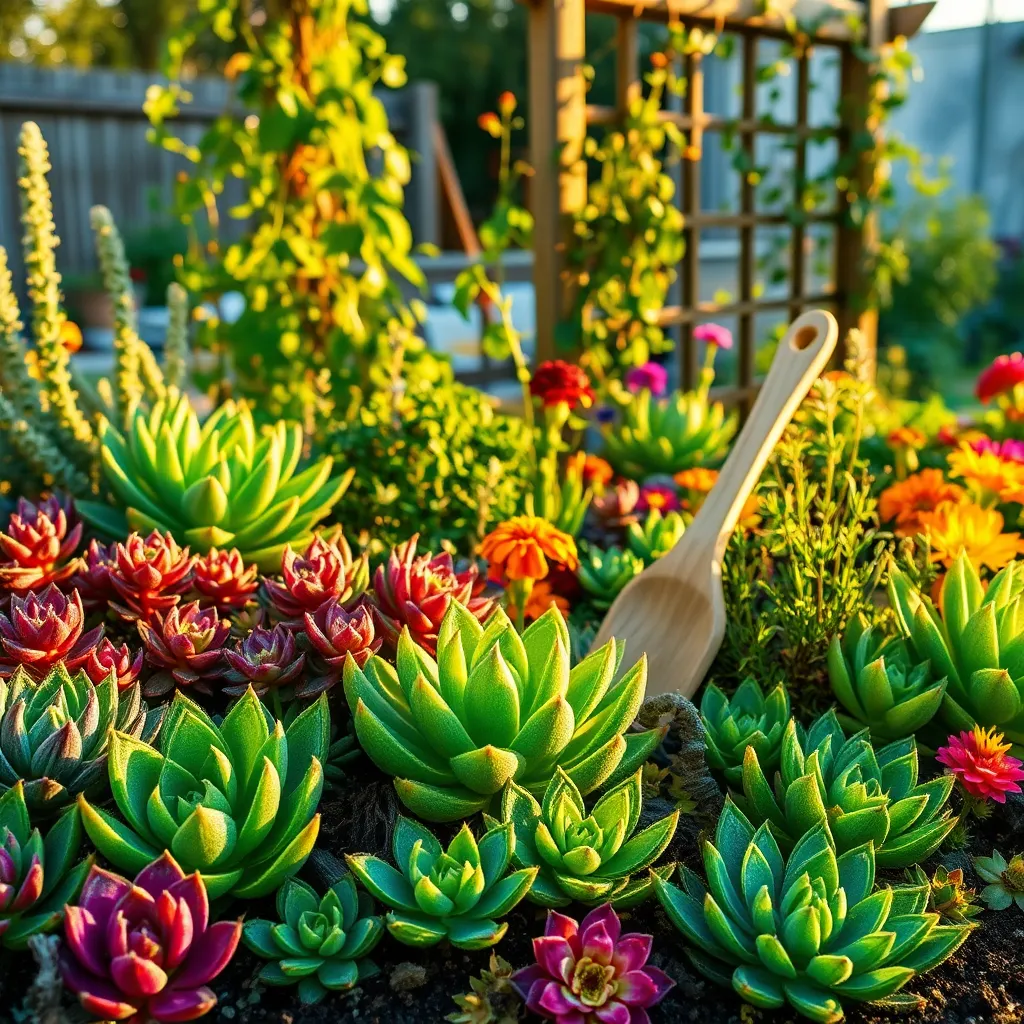
Incorporating natural pest management solutions into your succulent garden is essential for maintaining healthy plants without the use of harmful chemicals. One effective technique is to introduce beneficial insects, such as ladybugs and lacewings, which help control aphid populations.
Another method is to use natural barriers to deter pests from reaching your succulents. Placing crushed eggshells around the base of your plants can discourage slugs and snails, while also enriching the soil with calcium as they decompose.
For those dealing with larger pest issues, consider making a homemade spray using neem oil, which is a safe and natural option. Simply mix one teaspoon of neem oil with a quart of water, and spray this mixture on affected plants every two weeks to keep pests at bay.
Advanced gardeners might explore companion planting as a strategic pest deterrent. Pairing succulents with herbs like rosemary or thyme can naturally repel insects due to their strong aromatic properties.
Water Conservation Strategies
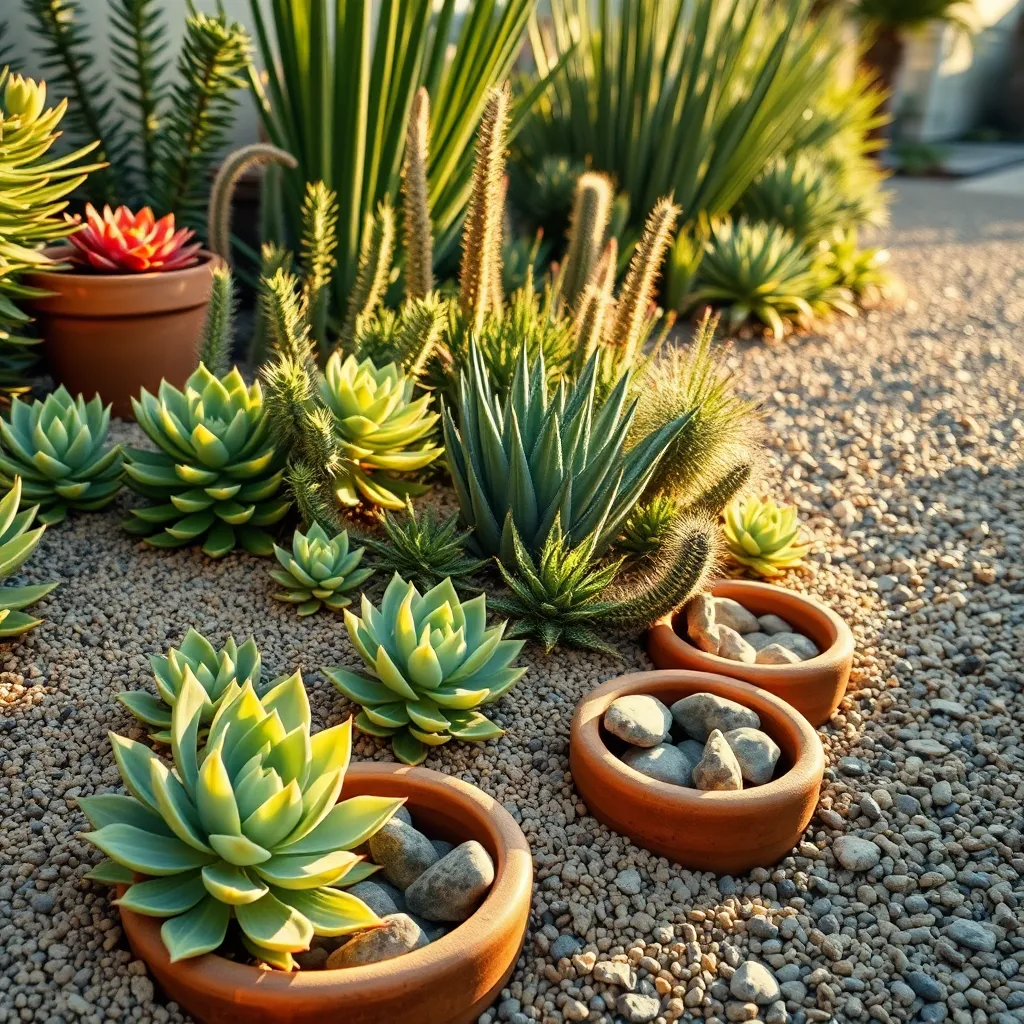
When creating a succulent garden, water conservation is crucial because these plants thrive in dry conditions. To minimize water usage, consider using a thick layer of organic mulch around your succulents, which helps retain soil moisture and suppresses weeds.
For beginners, it’s essential to use well-draining soil to prevent root rot and ensure healthy plant growth. A simple mix of one part sand, one part perlite, and two parts potting soil creates an ideal environment for succulents.
Advanced gardeners might explore drip irrigation systems to deliver water directly to the plant roots, reducing evaporation and waste. This method not only conserves water but also keeps the foliage dry, preventing fungal issues.
Another effective strategy is to group succulents with similar water needs together, ensuring that each plant receives the right amount of moisture without overwatering. This approach simplifies watering routines and helps maintain the health of your entire garden.
Creating Vertical Succulent Displays
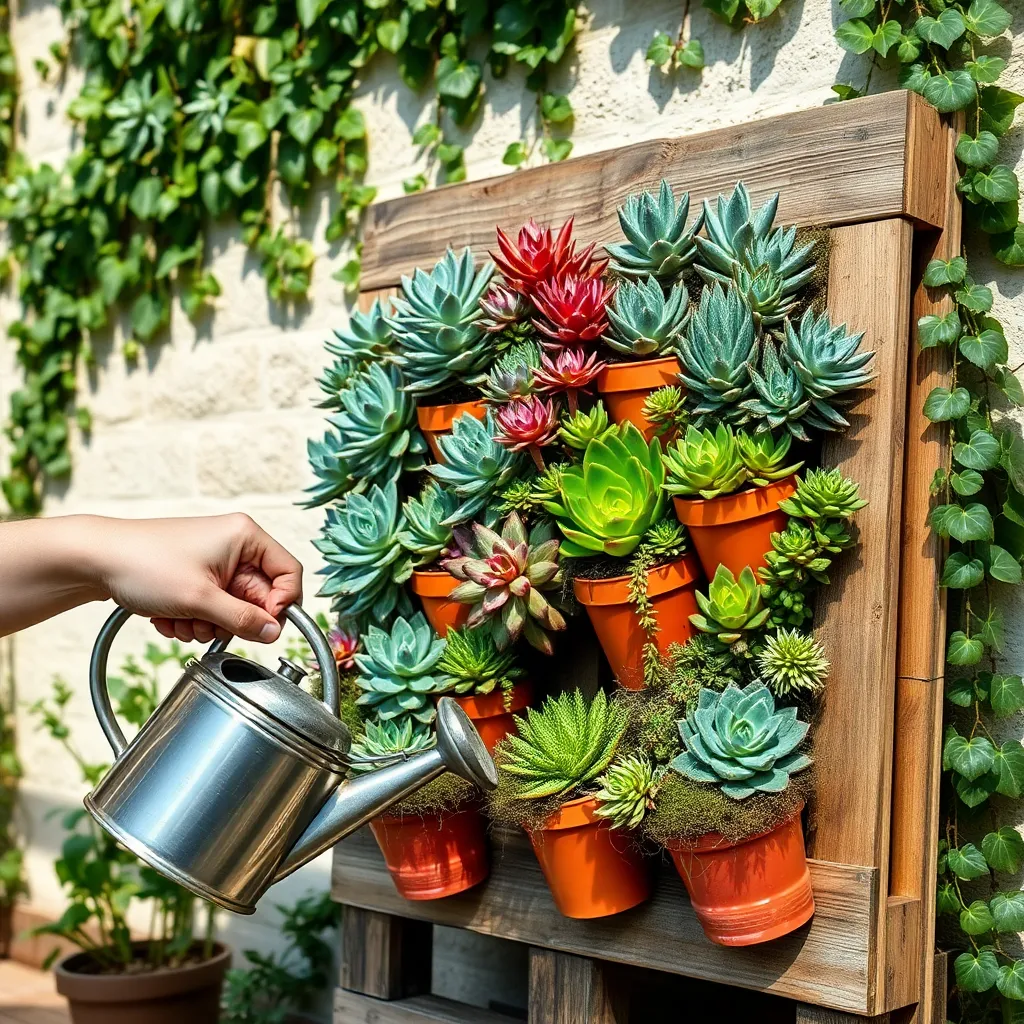
Vertical succulent displays are a fantastic way to maximize space and add visual interest to your garden or home. These displays can be created using a variety of structures, such as wooden frames, hanging pots, or even repurposed items like pallets or ladders.
To begin, select a sturdy frame that can support the weight of your succulents and the soil. Ensure the frame has a backing to hold the soil in place, and consider using a mix specifically designed for succulents, which typically includes sand or perlite for drainage.
When planting, arrange your succulents in a way that balances color, texture, and size, creating an appealing display. For a thriving arrangement, choose succulents with similar light and water requirements, such as Echeveria and Sedum, which both thrive in bright, indirect light and require minimal watering.
Watering a vertical succulent display requires careful attention to prevent overwatering. Use a spray bottle or a gentle watering can to moisten the soil, aiming to water only when the soil is completely dry, usually every two to three weeks depending on the environment.
For more advanced gardeners, consider introducing a self-watering system or incorporating a variety of succulent cuttings for a more dynamic look. Prune regularly to maintain the shape of your display and remove any dead leaves to promote healthy growth.
Integrating Succulents in Small Spaces
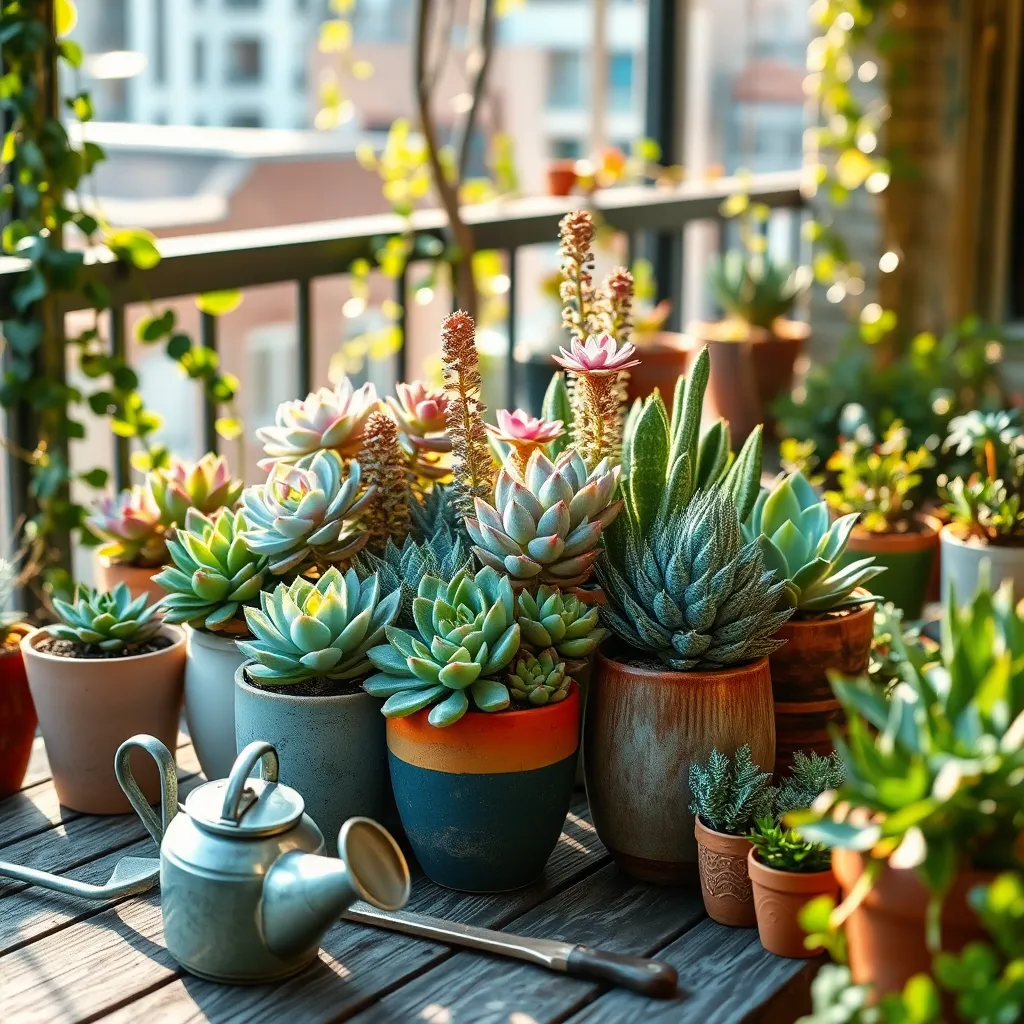
Incorporating succulents into small spaces can be both rewarding and manageable. Start by choosing compact varieties like Echeveria or Haworthia, which thrive in limited areas and require minimal maintenance.
When selecting containers, opt for shallow pots with drainage holes to prevent waterlogging. Use a well-draining soil mix, such as a blend of cactus soil and perlite, to ensure healthy root growth.
Position your succulents in a spot that receives bright, indirect sunlight for at least 4-6 hours a day. If natural light is insufficient, consider supplementing with a grow light to maintain their vibrant colors and compact form.
Watering is another critical aspect of succulent care, especially in confined spaces. Allow the soil to dry out completely between waterings, which typically means once every 1-2 weeks, depending on the climate and season.
For those ready to explore more advanced techniques, consider creating a mini succulent garden in a terrarium. Ensure proper ventilation and avoid closed containers to prevent humidity buildup, which can lead to rot.
Seasonal Care for Organic Gardens
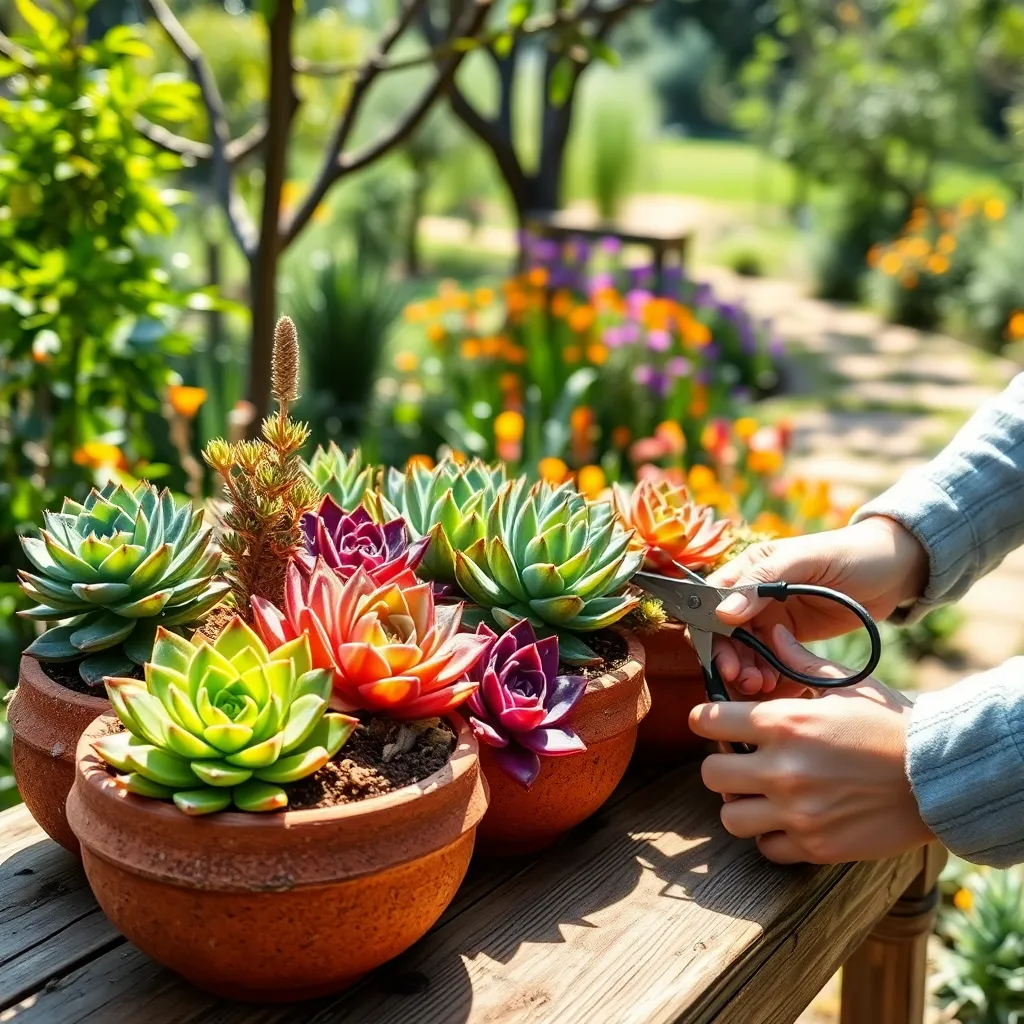
As the seasons change, so do the needs of your organic succulent garden. In spring, focus on refreshing your soil with a well-draining mix, such as a blend of coarse sand, perlite, and organic compost.
During the summer, ensure succulents receive adequate sunlight to thrive, but be cautious of extreme heat. Consider providing shade during the hottest part of the day, especially for delicate varieties, to prevent sunburn.
Autumn is an ideal time to prune and propagate your succulents, promoting healthy growth and expanding your garden. Use a clean, sharp knife to take cuttings, allowing them to callous over before planting in well-draining soil.
In winter, water your succulents sparingly, as most enter a dormant period and require less moisture. Ensure they are kept in a frost-free environment, as freezing temperatures can damage or kill the plants.
Maintaining Long-Term Sustainability
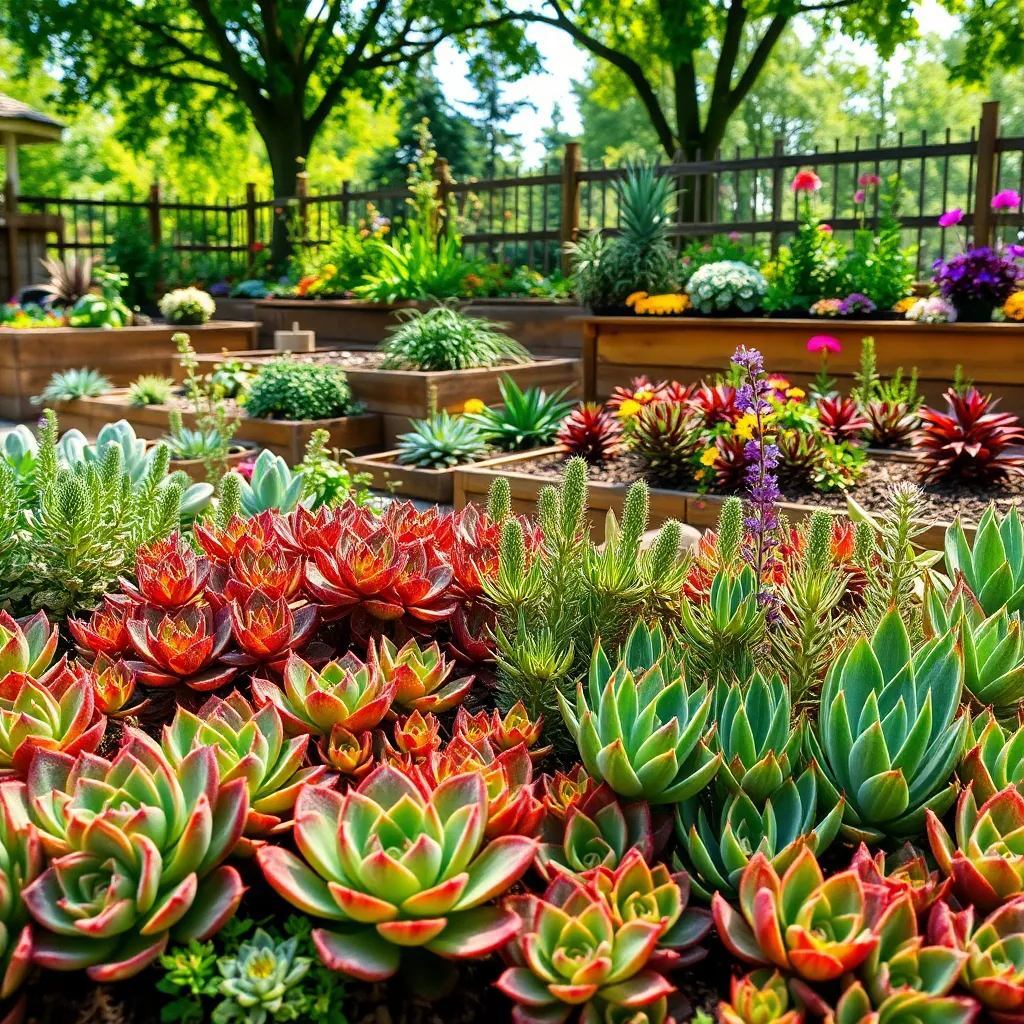
Ensuring the long-term sustainability of your succulent garden begins with understanding its natural requirements. Succulents thrive in well-draining soil, so consider using a cactus mix or creating your own blend with sand, perlite, and organic matter.
Watering succulents properly is crucial for their longevity. It’s best to water deeply but infrequently, allowing the soil to dry out completely between waterings to prevent root rot.
To enhance your garden’s sustainability, integrate organic practices such as composting. Using homemade compost not only enriches the soil but also reduces your reliance on chemical fertilizers, benefiting both your plants and the environment.
For those looking to take their gardening skills to the next level, consider implementing a rainwater collection system. This eco-friendly approach not only conserves water but also provides a natural source of irrigation that succulents can thrive on.
Conclusion: Growing Success with These Plants
As we explored the 14 organic succulent garden designs, we uncovered key relationship concepts that parallel the nurturing of a thriving garden. From “Communication Cacti” that emphasize honest dialogue, to “Trustworthy Thymes” that remind us of the slow, steady growth of trust, each design offers a unique perspective. “Patience Palms” teach us the value of time, while “Respectful Roses” highlight mutual appreciation. Meanwhile, “Empathy Evergreens” show us the importance of understanding, and “Flexibility Ferns” encourage adaptability.
Now, it’s time to cultivate your own relationship garden. Choose one concept that resonates most with your current situation and implement it today. Whether that’s initiating an open conversation or practicing patience, small actions can yield significant change.
Don’t let these insights fade with the page. Bookmark this article as your go-to guide for nurturing relationships through life’s seasons. By revisiting these concepts, you’ll be equipped to tackle challenges and celebrate successes.
Remember, the path to relationship success is like a garden—requiring consistent care, attention, and love. With these tools in hand, you’re well-prepared to watch your relationships flourish. Save this article, and let your journey toward a more fulfilling connection continue to grow.

